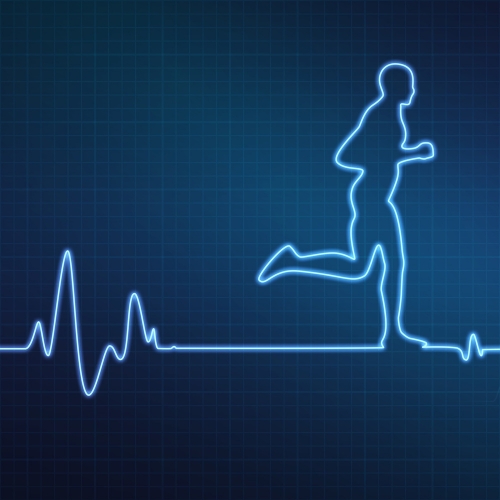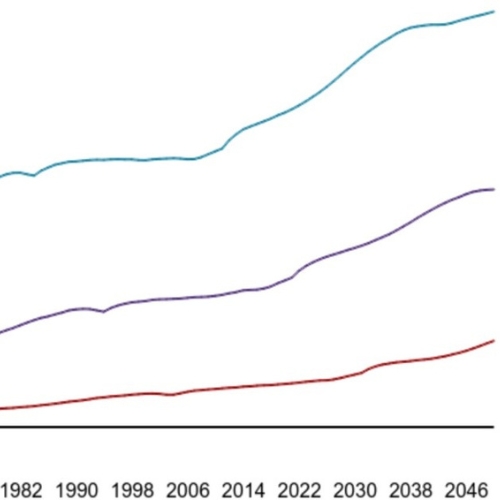Cardiorespiratory fitness (CRF) isn't just about running faster or lifting heavier – it's a major predictor of your overall health and lifespan. Recent research, analyzing data from over 20 million individuals, has underscored the critical role CRF plays in promoting well-being. This research, carried out by Dr Justin J Lang from University of Ottawa, delves into these landmark studies, revealing why CRF is so important and how it can shape your health outcomes.
Understanding cardiorespiratory fitness
CRF evaluates how efficiently the cardiovascular and respiratory systems work together to supply oxygen to muscles during sustained physical activity. It measures the body's ability to perform dynamic exercises that engage large muscle groups over prolonged periods. The primary metric for CRF is VO2 max, which stands for maximal oxygen uptake. VO2 max quantifies the maximum amount of oxygen the body can consume during intense exercise, reflecting aerobic endurance and overall physical fitness.
Higher CRF levels are linked to numerous health benefits, including reduced risk of chronic diseases such as heart disease, diabetes, and certain cancers. Individuals with high CRF have more efficient oxygen transport and utilization, which supports better physical performance and recovery.
CRF is typically measured through graded exercise tests, such as treadmill or stationary bike tests, where exercise intensity gradually increases while monitoring oxygen intake and carbon dioxide output. These tests require specialized equipment to measure gas exchange and provide an accurate VO2 max reading. For situations where direct measurement is not feasible, CRF can be estimated using non-exercise prediction equations based on factors like age, sex, weight, and self-reported physical activity levels.
Impact of high CRF on health
Research has demonstrated a strong link between high cardiorespiratory fitness (CRF) and reduced mortality rates. Specifically, studies indicate that individuals with elevated CRF levels have approximately a 50% lower risk of dying from any cause compared to those with lower CRF levels.
This significant reduction highlights the protective effect of good physical fitness against various life-threatening conditions. Furthermore, the benefits of high CRF extend to chronic disease prevention.
For example, high CRF has been associated with a reduction of up to 69% in the risk of developing heart failure. This data suggests that maintaining or improving CRF through regular physical activity could be a key strategy in enhancing longevity and reducing the incidence of serious health issues.
CRF's impact
The relationship between CRF and health outcomes is characterized by a dose-responsive effect, meaning that each incremental improvement in CRF results in progressively greater health benefits. CRF is commonly measured in metabolic equivalents (METs), which provide a scale for gauging exercise intensity and energy expenditure. For instance, an increase of 1 MET in CRF has been associated with a significant reduction in all-cause mortality, ranging from 11% to 17%. This reduction demonstrates how even modest improvements in physical fitness can have a profound impact on longevity.
The advantages of increased CRF are not limited to mortality rates alone; they also significantly lower the risks associated with various chronic diseases. Enhanced CRF levels are linked to a marked decrease in the likelihood of developing heart failure and experiencing strokes. Each MET increase in CRF not only boosts overall cardiovascular health but also contributes to the prevention of potentially debilitating conditions like stroke, underscoring the importance of regular physical activity in maintaining and improving overall health.
CRF as a predictor of health outcomes
CRF has proven to be a superior predictor of health outcomes compared to traditional health indicators such as blood pressure and cholesterol levels. This enhanced predictive capability of CRF offers significant advantages for preventive medicine, allowing for earlier identification of individuals at heightened risk for various health issues. Early detection is crucial as it enables the implementation of targeted interventions that are tailored to individual health profiles.
The predictive strength of CRF stems from its comprehensive reflection of the body's aerobic capacity and the health of several critical systems, including the cardiovascular and respiratory systems. As a result, CRF provides a more holistic view of an individual's health status than isolated metrics like blood pressure or cholesterol, which might only reveal specific aspects of health and not the overall fitness level or the risk for future health problems.
With CRF as a key assessment tool, healthcare providers can more accurately stratify patients based on their risk of developing conditions such as cardiovascular diseases, diabetes, and even certain types of cancer. This stratification means that interventions, whether lifestyle modifications like diet and exercise or medical treatments, can be initiated earlier and tailored more effectively, enhancing the likelihood of positive health outcomes. The potential for CRF to drive preventive health strategies represents a significant shift towards more proactive, personalized healthcare.
CRF's role in clinical settings
Integrating CRF assessments into standard clinical evaluations could fundamentally transform the landscape of preventive healthcare. By recognizing CRF as a "clinical vital sign," similar in importance to heart rate, blood pressure, and temperature, healthcare providers can gain crucial insights into a patient's overall health and long-term risk factors. This recognition allows for a more nuanced risk stratification process, enabling clinicians to identify individuals who may not exhibit traditional risk factors yet still possess a heightened risk due to poor cardiorespiratory health.
With precise CRF data, interventions can be more accurately tailored to meet the specific needs of each patient. For example, a patient identified with a lower CRF level could receive personalized exercise programs aimed at gradually improving their fitness, which can substantially reduce their risk of chronic diseases. Furthermore, routine CRF assessments provide a measurable and trackable marker of health improvement, offering patients and clinicians a clear indicator of progress over time.
Improving CRF through prescribed physical activity is directly linked to better health outcomes. Regular aerobic exercise, which effectively boosts CRF, has been associated with reduced incidence of cardiovascular diseases, improved mental health, better weight management, and enhanced metabolic health. Encouraging physical activity as a part of routine healthcare can thus play a pivotal role in preventing a wide range of health problems, ultimately reducing the burden on healthcare systems and improving the quality of life for individuals. This proactive approach not only helps in managing existing conditions but also in preventing the onset of new health issues, underscoring the potential of CRF assessments to revolutionize preventive care.
Future directions
Despite its proven benefits, research gaps remain. Most studies have predominantly male participants, highlighting a critical need for more inclusive research, especially concerning women and various chronic conditions. Addressing these gaps could refine our understanding of CRF’s benefits across different populations.
The robust association between high CRF and reduced risk of mortality and morbidity underscores its importance. It’s more than a fitness metric; it’s a vital health indicator that could guide clinical practices and public health policies. As we advance, integrating CRF assessments into regular health checks could be a game-changer for preventive healthcare.
The study is published in the journal British Journal of Sports Medicine.






